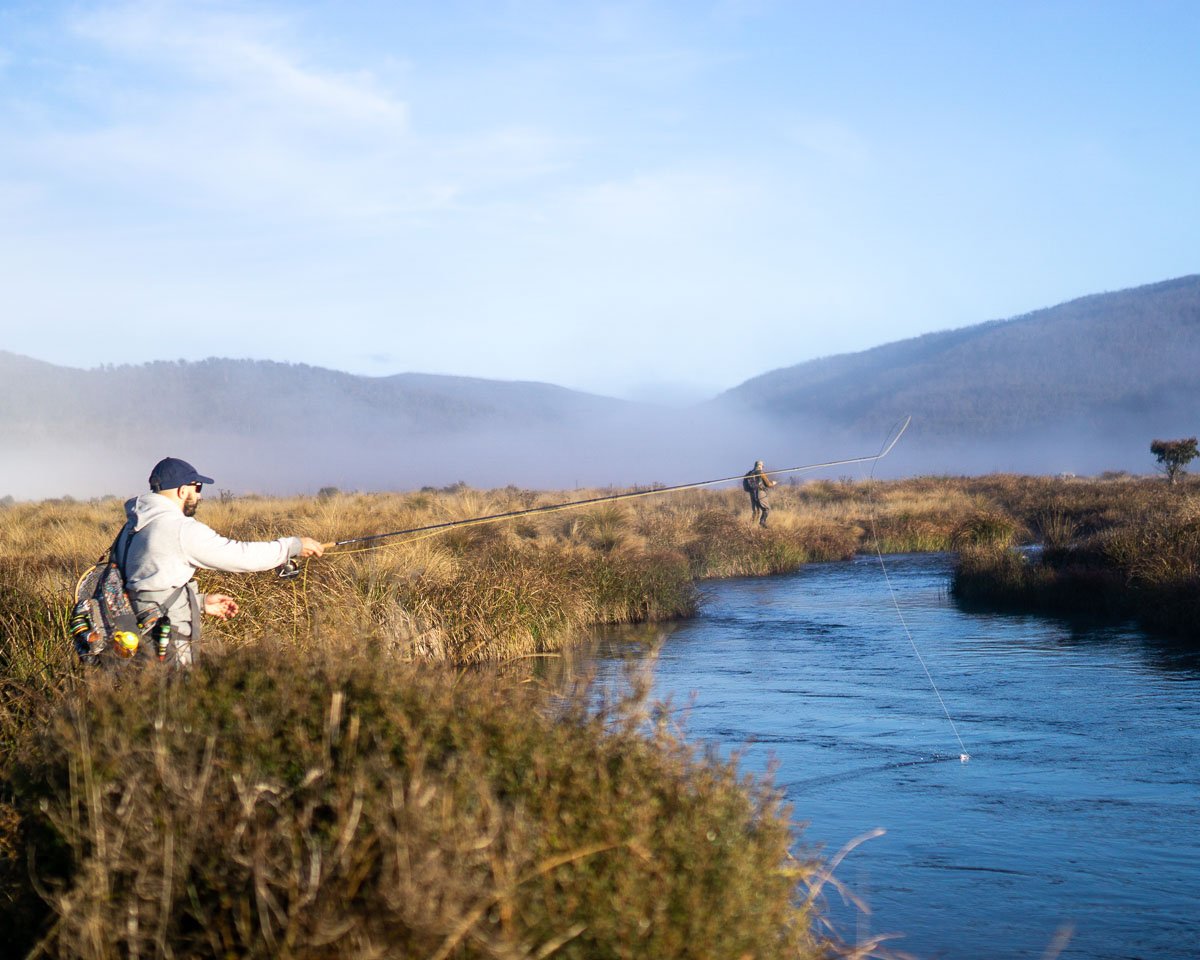How to mend your line
As you can read in How to get a natural presentation ensuring your flies drift consistently with the current, the conditions of the flow is arguably the most important factor in inducing the eat. Presentation over pattern. But how? Your fly, if floating untethered, will drift naturally, unhindered. Yet when hitched to a tippet, which is hitched to a leader, which is hitched to a fly line, the story is different. These ‘hinge’ points, when floating in a current flowing at different speed to your fly, will drag your fly. This prevents natural drift. The technique used to overcome that drag is mending.
Mending is the process of repositioning your fly line on the water's surface to achieve a natural, drag-free drift. When you cast your fly onto the water, the line and leader are subject to various currents that can create unwanted drag. Drag occurs when the fly line pulls on the fly, making it appear unnatural and deterring fish from striking. Mending your line effectively helps eliminate this drag and presents your fly naturally, increasing your chances of enticing a fish to bite.




The reasons for mending are many, all equally as important as the next.
Natural presentation: As insinuated, fish are selective creatures, and they are more likely to strike at a fly that is behaving, or drifting, like the real thing. Mending ensures that your fly drifts naturally with the current, mimicking the movement of insects on the water's surface.
Extended drift: Mending enables your fly to drift within the strike zone for longer. No surprises to anyone, but a longer drift increases your chances of attracting fish and getting them to bite.
Line control: Mending helps you control the movement of your line and leader on the water's surface, preventing unwanted drag that can spook fish.
Versatility: Mending allows you to secure a natural drift in pieces of water that otherwise seem ‘unfishable’. Think about that deadly still back eddy you try and cast across the stream to. Mending your line back upstream keeps your fly from being dragged out of there for a moment. But a moment is all a back eddy dwelling brown trout needs.
How to mend your fly line
The basics of mending:
Before diving into specific techniques, it's essential to understand the two primary types of line mending: upstream and downstream.
Upstream Mend: This involves place, or flicking, the line upstream of your fly's position. It's useful when you want to slow down the fly's drift in fast currents or when fishing across currents.
Downstream Mend: This involves moving the line downstream of your fly's position. To be used when you want to speed up the fly's drift in slow currents or when fishing below you.
Extra tips and tricks
Reading the Water:
You can’t mend without first reading the water and understanding the current's flow. You need to understand the direction, and pace, in which the flow your fly and your dly line, land in. Look for seams, eddies, and current breaks where fish are likely to hold. This determines whether an upstream or downstream mend is required.
Timing Is Key:
Timing your mends is crucial. Make your mend as soon as the fly hits the water, before the current can affect the line's position. Continuous monitoring and mending throughout the drift may be necessary, especially in complex currents.
The Reach Mend:
The reach mend is a fundamental mend used to reposition your line and leader. To execute a reach mend:
Cast your fly as normal.
As the cast ends and the line ‘shoots’, extend your rod tip either upstream (upstream reach mend) or downstream (downstream reach mend).
This repositions the line on the water's surface and allows for a drag-free drift for longer.
The Stack Mend:
The stack mend is used in slow or flat water when you want to create a natural presentation. It involves ‘stacking’ the line and leader upstream or near of your fly. This allows the leader and line to drift downstream for a moment, taking the slack that has been ‘stacked’ up and not drag the fly. The fly can then continue to drift naturally downstream. To perform a stack mend:
Cast your fly slightly upstream and across the current.
As the fly lands, lift your rod tip and stack the line and leader upstream.
Lower your rod tip to allow the fly to drift drag-free.



